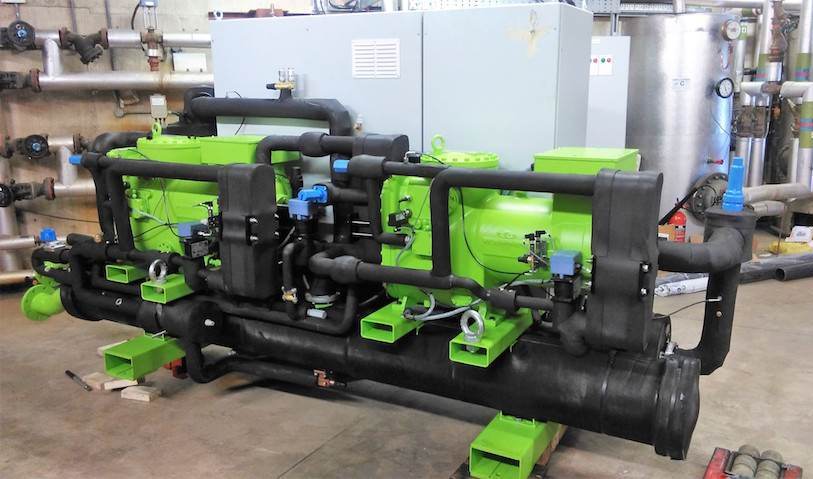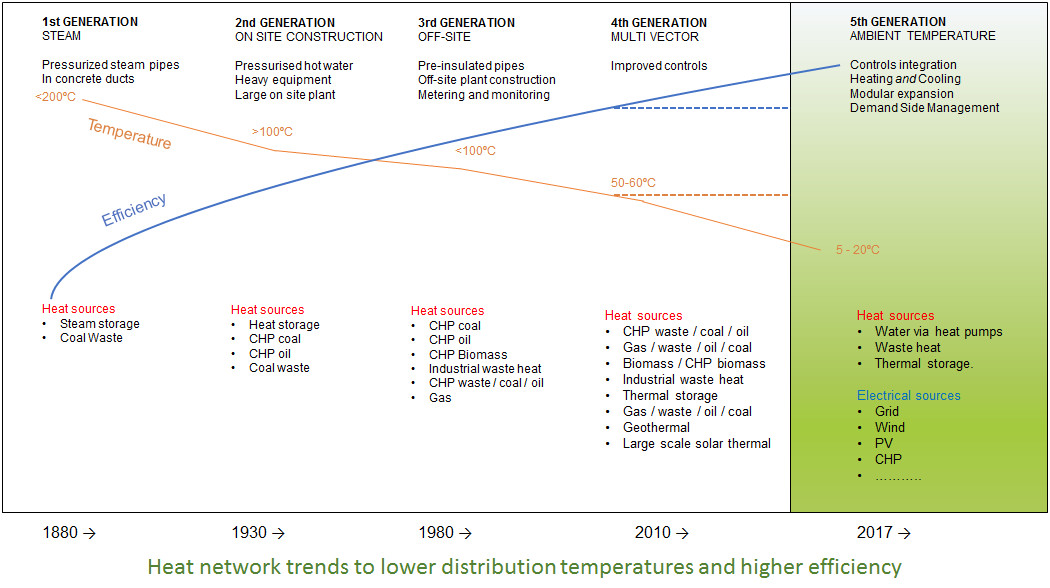Heat Networks Investment Project – HNIP
The government has announced that consumers and non-domestic users like hospitals, schools, universities and council buildings can participate in the Heat Networks Investment Project.
Marking another step in the government’s Clean Growth Strategy, the £320 million Heat Networks Investment Project offers grants and loans to the public and private sectors in England and Wales, for networks serving two or more buildings. The HNIP is open for applications from February 2019.
Heat networks could play a vital role in the decarbonisation of heating, as they provide a unique opportunity to exploit larger scale renewable and recoverable heat sources using water source heat pumps. BEIS estimates that heat networks could meet up to 17% of heat demand in homes and up to 24% of heat demand in industrial and public sector buildings by 2050.
Grants of up to £5 million are available for up to half the capital construction costs for individual projects. New heat networks will be eligible for support as well as the expansion and refurbishment of existing networks if they deliver additional carbon savings.
The HNIP is designed to help foster a supply chain for heat networks with the aim of being self-supporting by 2022 when the scheme is due to end.
Energy Minister Claire Perry said on 11 April 2018:
The UK has led in the decarbonisation of electricity, and today’s announcement shows we are just as committed to tackling heat.
Today’s announcement creates a route to market for innovative energy projects across the country and demonstrates a key objective of the Clean Growth Strategy;
to help deliver technologies that can lower bills, cut carbon and improve the quality of life for communities across the country.
Heat Network Infrastructure
BEIS states that, "Heat network infrastructure is technology-neutral and can generally accommodate a range of fuels depending on the heating requirements of buildings connected including:
- CHP (combined heat and power)
- Deep geothermal
- Water sources via heat pumps
- Industrial waste heat
- Energy from waste
- Renewable heat
- Urban recovered heat"
BEIS has also published a brochure on Heat Network Case Studies.
CHP for district heating has been overtaken by events
Since plans for the HNIP were first announced in 2015 and DECC then envisaged CHP being the primary mechanism for delivery, CHP for district heating has been overtaken by events:
- decarbonisation of the electricity grid has progressed dramatically
- most commercial buildings need cooling in summer as well as heating in winter
- urban air pollution has moved to the front of the political agenda.
Decarbonisation of the grid
The carbon content of grid electricity has fallen by over 50% since 2014. At this level using CHP for providing heat to district networks emits more CO2 than if the heat were provided directly to each building by groundwater heat pumps from a communal ground array using grid electricity.
Buildings need cooling
Most commercial buildings need cooling in summer as well as heating in winter. CHP-based district heating systems do not provide cooling (unless a separate set of insulated pipes are installed and served by absorption chillers).
In contrast, groundwater heat pumps can provide cooling very simply by reversing their heat transfer to reject heat to a communal ground array and thus cool the building.

Urban air pollution
CHP-based networks incorporate combustion engines which release NOx, SOx and particulates on site – in addition to CO2. A district heating and cooling network based on a communal ground array and using a groundwater heat pump in each building to meet the heating and cooling needs of that building issues no on-site gases of any kind.
Cost of District Heating and Cooling based on Groundwater Heat Pumps
As well as answering the real needs of buildings – and the people within them – the good news is that district heating and cooling based on heat transfer is:
- cheaper to install than a CHP-based heat network
- cheaper to run than a CHP-based heat network
- more flexible to expansion than a CHP-based heat network
Heat Networks Investment Project
BEIS has appointed Triple Point Heat Networks as its HNIP delivery partner. Applications for grants and loans to support new investment in heat networks, or extensions to existing heat networks, from both the private and public sectors are now being reviewed.
A BEIS spokesman said, “The UK has led in the decarbonisation of electricity and we are equally committed to tackling heat. The Heat Networks Investment Project has created a route to market for innovative energy projects across the country and demonstrates a key objective of the Clean Growth Strategy: to deliver technologies that lower bills, cut carbon and improve the quality of life for communities across the country.”
The 92 page HNIP Application Guidance was published in December 2018. Summary points from the document:
- HNIP aims to promote a heat network market to contribute to decarboniation of the UK energy system
- grants of up to £5 million – to cover up to 50% of capital cost of construction
- grants for heat network sponsors or owners
- networks must provide heating or cooling to more than one building
- distribution of thermal energy by fluid at any temperature (includes ambient temperature networks)
- must deliver carbon savings
- must show positive Social Net Present Value (cost and benefits of project including value of carbon saving and avoided air quality damage)
- BEIS will also consider strategic heat networks (eg including low temperature distribution, thermal storage or demand side response)
- networks should have no technical, contractual or economic impediments to expansion
- applicants should follow recognised codes of practice for design and consumer protection
- projects should show positive financial returns before "gap funding" from HNIP
- HNIP funding is available between March 2019 and March 2022
The full HNIP Application Guidance can be seen here.
If you would like help in planning or extending a Heat Network then do give us a ring on 020 7253 2240.
ICAX Heat Networks
ICAX has designed and installed the following following Fifth Generation District Heating Networks based on heat pumps in each building extracting heat from an ambient ground temperature network, when they need heating, and rejecting heat to the heat network when they need cooling:
- Balanced Energy Network at London South Bank University
- Community Heating Southwark: a set of open loop aquifer systems in Southwark
- Owen Square District Heating at Easton, Bristol
ICAX also monitors and maintains these heat networks.
See Ground Source Heating See Ground Source Cooling See Ground Source Energy



